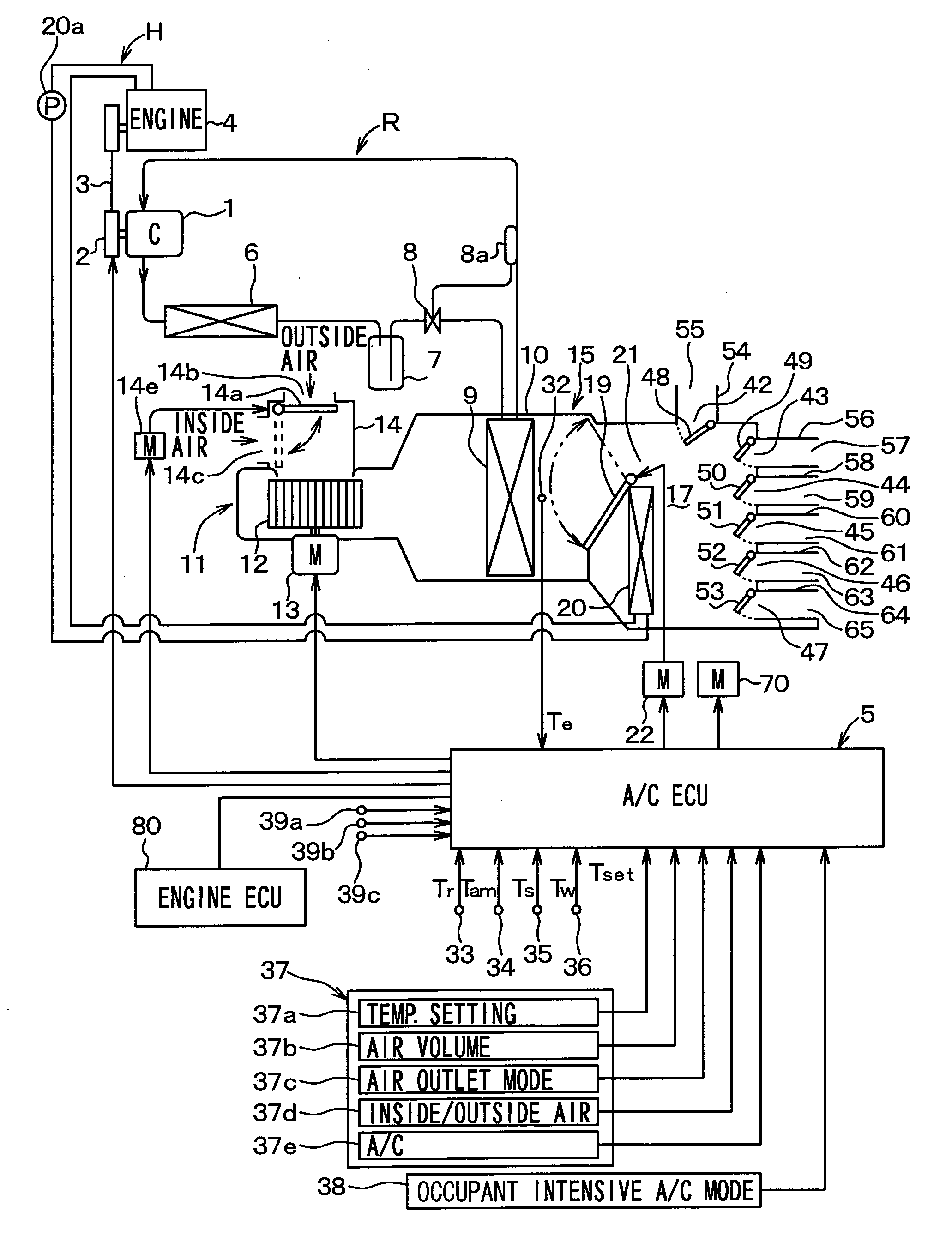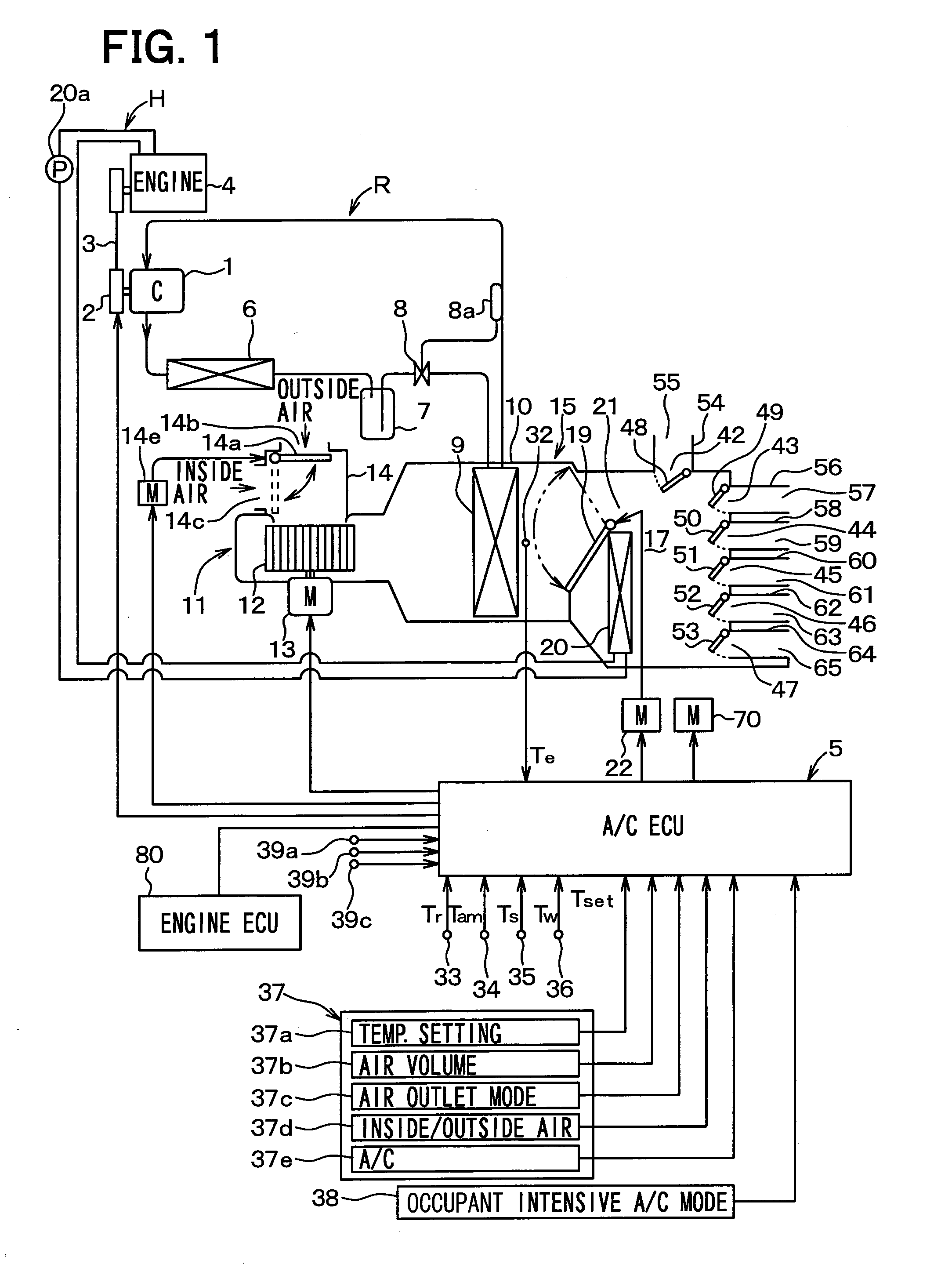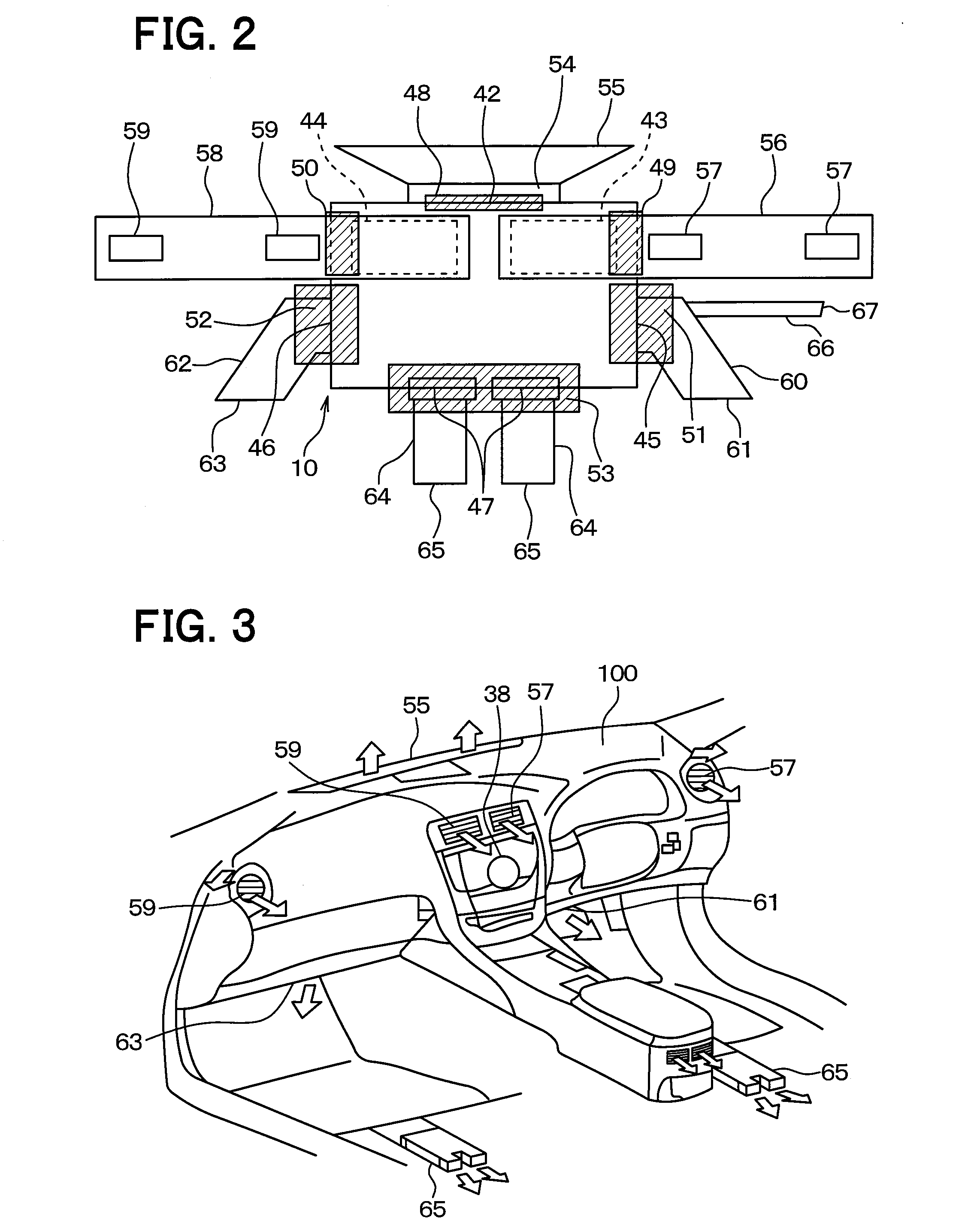Vehicle air conditioner
a technology for air conditioners and vehicles, applied in vehicle components, vehicle heating/cooling devices, transportation and packaging, etc., can solve the problem of early change in temperature of the vehicle interior, and achieve the effect of prolonging the period during which the idling stop is implemented
- Summary
- Abstract
- Description
- Claims
- Application Information
AI Technical Summary
Benefits of technology
Problems solved by technology
Method used
Image
Examples
first embodiment
[0041]FIGS. 1 to 3 illustrate a vehicle air conditioner according to the present embodiment. FIG. 1 is a diagram illustrating an overall configuration of a vehicle air conditioner according to the present embodiment. FIG. 2 is a top view of the vehicle air conditioner according to the present embodiment, and FIG. 3 is a diagram illustrating a vehicle interior outlet port of the vehicle air conditioner according to the present embodiment.
[0042]A vapor compression refrigeration cycle device R of a vehicle air conditioner in FIG. 1 is equipped with a compressor 1 that sucks, compresses, and discharges a refrigerant by a kinetic energy output from a travel engine 4. Specifically, the compressor 1 has an electromagnetic clutch 2, and the kinetic energy (motive power) output from the travel engine 4 is transmitted to the compressor 1 through the electromagnetic clutch 2 and a belt 3. The energization to the electromagnetic clutch 2 is intermittently implemented by an electronic control un...
second embodiment
[0121]In the above-mentioned first embodiment, the example in which when it is determined that the travel engine 4 is operating as no in Step S26 of FIG. 5, the front seat air conditioning mode is implemented in association with this determination has been described. Alternatively, in the present embodiment, a description will be given of an example in which when it is determined that the travel engine 4 is operating as no, and the air conditioning load within the vehicle interior is equal to or higher than a threshold, the front seat air conditioning mode is implemented.
[0122]FIG. 8 is a flowchart illustrating a sub control process according to the present embodiment. In the present embodiment, a flowchart in FIG. 8 will be applied instead of the flowchart in FIG. 5. In FIG. 8, Step S29 is added between Step S26 and Step S28 in FIG. 5. Under the circumstances, hereinafter, in a description of the sub control process according to the present embodiment, a description of common steps...
third embodiment
[0137]In the above first and second embodiments, a description has been given of the example in which whether the continuous operation time of the travel engine 4 is lower than the predetermined time t, or not, is determined in Step S20a of the sub control process in FIG. 5, to thereby determine whether it is immediately before the idling stop, or not. Alternatively, the determination may be conducted as follows.
[0138]FIG. 11 is a flowchart illustrating a sub control process according to the present embodiment. A flowchart in FIG. 11 will be applied instead of the flowchart in FIG. 5. Steps other than Step S20b in FIG. 11 are identical with those in FIG. 5. Hereinafter, Step S20b in the present embodiment will be described.
[0139]In Step S20b of the present embodiment, the operation rate of the travel engine 4 is calculated on the basis of a signal output from the engine ECU 80. The operation rate of the travel engine 4 is a ratio of an operation time of the travel engine 4 to a pred...
PUM
 Login to View More
Login to View More Abstract
Description
Claims
Application Information
 Login to View More
Login to View More - R&D
- Intellectual Property
- Life Sciences
- Materials
- Tech Scout
- Unparalleled Data Quality
- Higher Quality Content
- 60% Fewer Hallucinations
Browse by: Latest US Patents, China's latest patents, Technical Efficacy Thesaurus, Application Domain, Technology Topic, Popular Technical Reports.
© 2025 PatSnap. All rights reserved.Legal|Privacy policy|Modern Slavery Act Transparency Statement|Sitemap|About US| Contact US: help@patsnap.com



